Achieving diversity continues to be a major challenge for organisations. Many aspire to achieve it to a far greater extent than where they are currently. But there are no quick and easy fixes. However, implementing ‘diversity software’ can be a great way of building a better working environment for everyone.
Ensuring greater diversity in the workplace isn’t just a moral duty; there’s an extensive body of research showing the value of a more diverse workforce, highlighting benefits such as greater profitability and better financial performance. It can affect a company’s reputation too. And it matters to employees, with figures suggesting around half of the UK workforce believe their employer needs to do more on diversity.
While good intentions and genuine appreciation of the importance of fairness and equality are present in most organisations, building a truly diverse workforce requires carefully targeted action. Businesses need to actively identify and tackle any areas where diversity remains a concern and that starts with having clear data.
Having software for workforce diversity is essential, as without systems that provide accurate and detailed data, it’s virtually impossible to even begin to understand where your company is now in terms of diversity. Data is crucial for insights and clarity of the big picture, enabling organisations to identify the steps that need to be taken, track progress and sustain improvement. Objective data helps build the business case for any changes needed too.
How does payroll and HR software support this?

Payroll and HR software provides organisations with reliable real time data that both clarifies the bigger picture but can also be interrogated as necessary to pin down specific issues. These are some of the ways HR software for diversity can help build a better workplace:
- Managing gender pay gap reporting
Tackling gender pay inequality starts with understanding the size of the issue in any given organisation. And that depends on having clear and accurate data.
Since its introduction, gender pay gap reporting has been credited with enabling organisations to make progress with identifying steps to reduce the gap. But this can only be done effectively if there’s a mechanism in place that captures the data precisely. Good payroll software results in accurate pay gap data that can be flexibly reported on, meeting all requirements around pay gap reporting.
- Reviewing ethnicity pay gap issues
Diversity software, in relation to payroll, will likely grow as an industry over the next few years. As even though it’s not yet a legal requirement, it’s anticipated that ethnicity pay reporting will be required at some point. Many employers have begun collecting data already – according to research by PricewaterhouseCoopers, nearly a quarter of businesses are now collecting data on their ethnic pay gap figures.
Even if mandatory pay reporting is still a few years away, that doesn’t mean there isn’t a diversity issue that needs responding to now. It’s clearly best practice for companies to keep reviewing accurate data that highlights any issues that might be present in their company. HR and payroll software enables them to readily pull together key information to highlight potential concerns and to take positive steps to address them.
- Greater transparency of workforce composition
The issue of diversity isn’t just about the pay levels of people employed in organisations of course. It’s also about the mix of people within them. Along with gender and ethnicity considerations, a diverse workforce is made up of employees with all kinds of varied backgrounds and experiences.
Payroll and HR software offers the ability to easily break down and examine a whole range of demographic information, allowing patterns to be identified and next steps to be decided on if appropriate.
- Eliminating unconscious bias
There isn’t usually a deliberate choice to set out to discriminate against a particular person or demographic. But biases can creep unnoticed into all types of processes such as recruitment or selection for development opportunities, this is where diversity management software is at its most useful.
HR and payroll software data can be used to flag up blind spots to help eliminate these unconscious biases. Where are discrepancies arising? Are there indications that a certain demographic is more favoured when it comes to advancement opportunities perhaps? When it comes to pay levels, maybe there’s a bias towards educational background that cannot be justified?
There are numerous ways that reviewing HR and payroll software data helps managers ask the right questions and detect whether any biases have manifested themselves that need addressing.
Payroll and HR software data can help drive change

Payroll and HR software are lynchpins in providing accurate, detailed and easily interrogated data that will drive genuine sustained progress in diversity. The data alone will not provide all the answers. But the insights it offers provides the starting point for companies to dig deeper and decide on the most meaningful action they can take to achieve their diversity strategy.
The fact that software can provide accurate, real-time data means that managers, and particularly HR professionals, are not constrained by tackling diversity issues via a time-consuming process of trawling through potentially inaccurate and quickly out-of-date spreadsheet information. If your organisation would benefit from using more powerful payroll and HR software, or a fully integrated HR and payroll system, please contact us to find out more.

